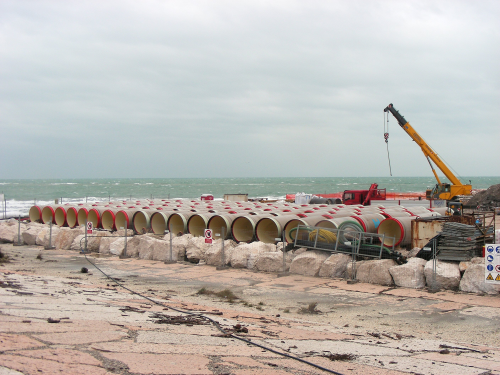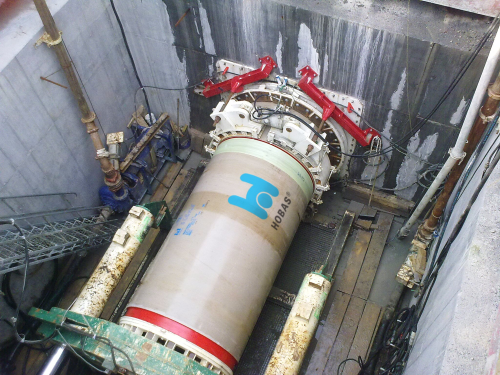


The lagoon of Venice is the largest in Italy. Situated between the drainage basin of the mainland and the sea it has been subjected to growing pollution as a result of increasing industrial and agricultural developments in the region. In 2000, the Regional Government of Veneto set up a plan to prevent further pollution and treat the water running from the basin into the lagoon. The project Fusina (P.I.F. – Progetto Integrato Fusina) forms the main part of the planned efforts. In this project, the existing treatment plant in Fusina is to be transformed into a multi-purpose facility that purifies the sewage and stormwater of Mestre, Marghera and Mirese (together approximately 350 000 inhabitants), industrial effluents and polluted groundwater from the Marghera harbour.
In order to optimise the treatment, the new plant collects sewage separately and according to the following scheme:
- sewage type A: sanitary sewage and stormwater from Mestre, Marghera and 17 towns in the Mirese region;
- sewage type B1: industrial effluents from the Marghera port basin;
- sewage type B2: stormwater and sullage; and
- sewage type B3: polluted groundwater.
Type A sewage is biologically treated with ultrafiltration membranes and consequently phytodepuration. The latter is conducted on an area of around 15 hectares where the water is purified through metabolic processes of nymphae (water lilies) and other water plants. Instead of daily diverting 75.000 m³ of water from the river Sile, the treated water is used by local industries and for cooling water in petrochemical plants. Purified type B sewage and exceeding type A water that cannot be re-used is led through a 20 km long DN 1400 pipeline into the sea.
The total cost for the planning and realisation of the plan amounts to €194 million.
The 20 km long outlet to the sea conveys the treated water 10 km from the plant in Fusina to Lido di Venezia and another 10 km to the sea where large tanker ships dock. In order to cross the Lido sandbar, 351 m DN 1400, PN 6 pipes were installed by microtunneling. The contractor Impresa Costruzioni Mantovani was responsible for the installation and entrusted I.CO.P. SpA with the microtunneling job.
“It took a long time for us to find a pipe that suits our requirements”, explains engineer Meneghini who is site manager at Mantovani SpA. “We needed a jacking pipe that would also withstand the operating pressure of the line. After a long research period we chose HOBAS CC-GRP Jacking Pipes since these inherently possess the characteristics necessary for jacking as well as for pressure pipes: mechanical strength and optimal hydraulic properties. Normally, two different pipe systems would have been utilised to match all requirements.”
The HOBAS CC-GRP Jacking Pressure Pipes that were chosen in 3 m long sections, with an external diameter of 1720 mm and a wall thickness of 85 mm allow a maximal jacking force of 6926 kN. The leak-tight pipe system with its high performance couplings is produced to withstand an operating pressure of 6-10 bar. The very smooth outer surface of the pipes enabled comparably low jacking forces and allowed a single jack over the complete section of 351m. Only the starting and receiving pit were used saving on three originally planned intermediate stations.
Thanks to the use of an MTBM (Micro Tunnel Boring Machine) drill head with a hydraulic soil removal (mucking) system and the smooth surface of HOBAS CC-GRP Pipes the line was installed within less than a month. The extremely small roughness coefficient of the inner liner of the pipes and the, compared to other materials, light wall construction reduced the volume of excavated material considerably keeping costs to a minimum.






